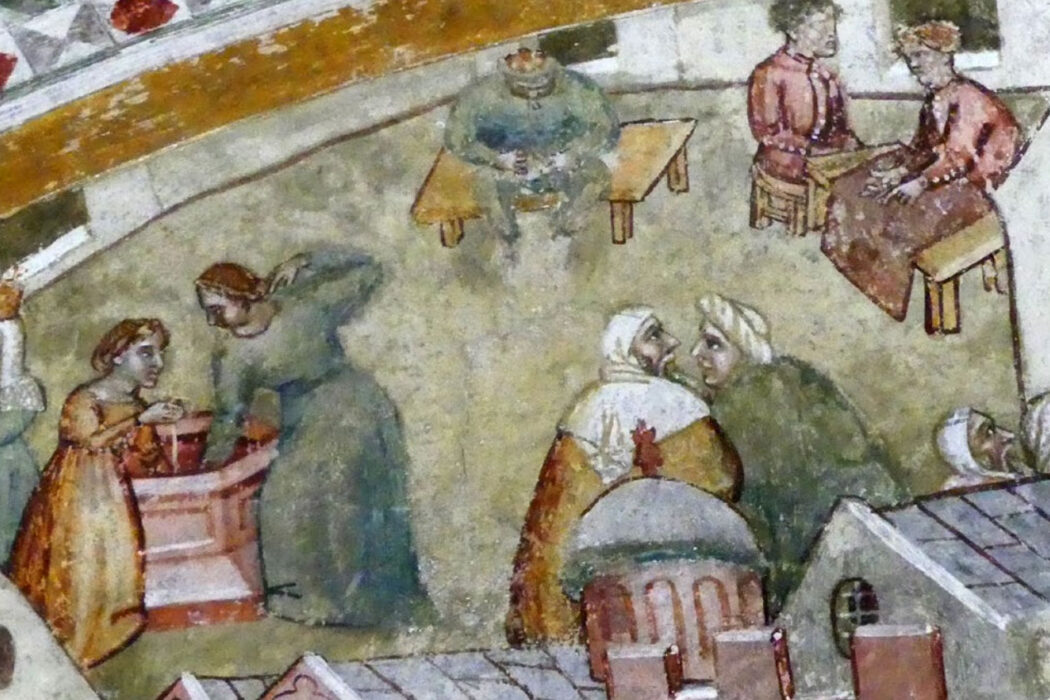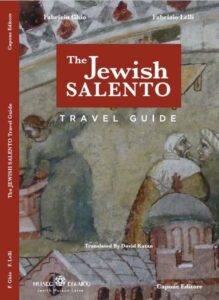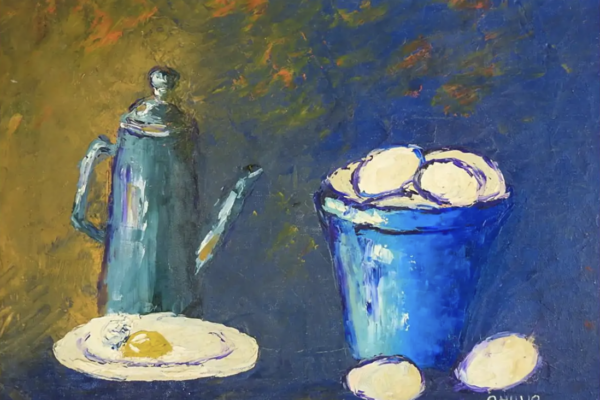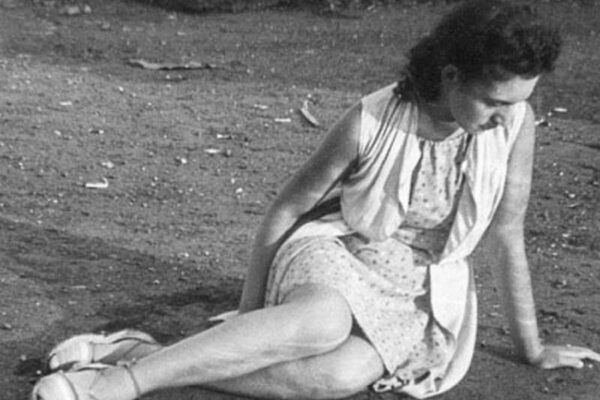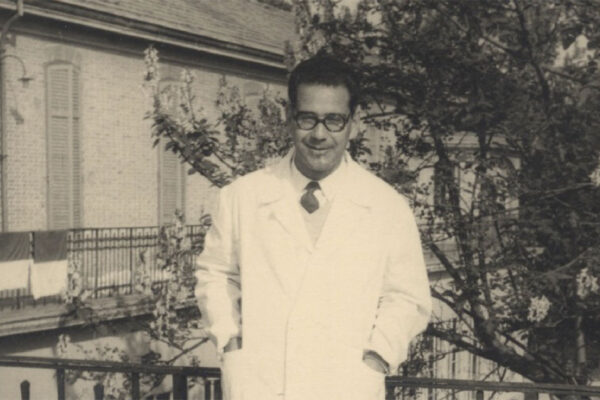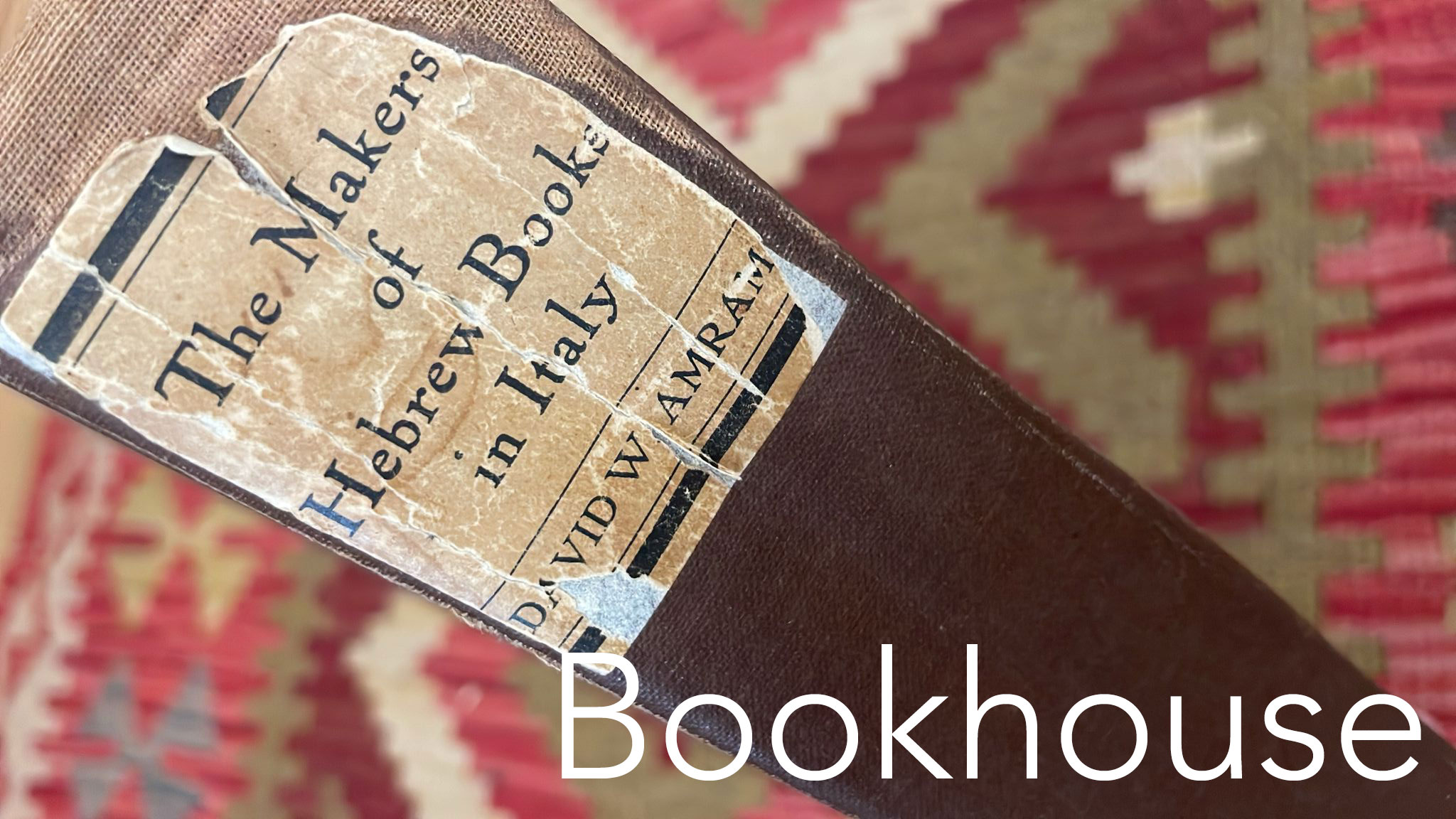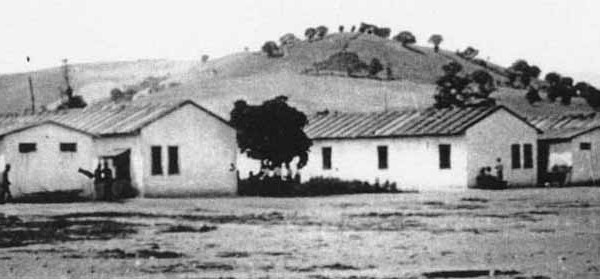A book published by the Jewish Museum of Lecce opens doors to the multifaceted and fascinating history of the Apulia region.
Fabrizio Ghio and Fabrizio Lelli, The Jewish Salento: Travel Guide. Translated by David Katan. Capone Editore
Imagine a medieval traveler in Puglia. A pilgrim anxious to leave for the Holy Land, or maybe a merchant with business in the East. Maybe a Christian or a Jew, we don’t know. He will certainly need accommodation in one of the ports before taking off and, before that, he will have needed places to stay along the Via Appia. This road was built by the Romans 300 years before the Common Era (BCE). It stretched from Rome, from the heart of the Empire itself, all the way to Brindisi, the port for the East and for the Land of Israel. Centuries after its creation, the Via Appia remained the main transport route between Europe and the East Mediterranean.
Our pilgrim, then, would have been welcomed by those of his own faith along the way. But even if they were of the same faith, they belonged to different cultures, spoke different languages, and lived with people of different faiths. So, our pilgrim would experience something of their traditions, talk, share, and exchange ideas. All of this would remain forever in his memory. On his return, he would write down his travels to let others, merchants or pilgrims, follow his path and learn from his experience.
One such traveler was Benjamin of Tudela. At the end of the 11th century, he left his native land in the Iberian peninsula (today’s Spain) to travel to the East. He described his long journey in a book destined to remain an unsurpassed guide to the medieval Jewish communities.
Two days (travel from Benevento) is Melfi, in Puglia, meaning the land of Pul, where about two hundred Jews live, led by Rabbi Achimaatz,
Rabbi Nathan, and Rabbi Isaac.
From Melfi, it is a day’s walk to Ascoli: where about forty Jews live. The most important of whom are Rabbi Consoli, Tzemach, and his son-in-law, Rabbi Joseph. It is another two days’ walk to Trani, situated on the sea.
Due to the convenience of its port, Trani is where all the pilgrims
congregate before heading for Jerusalem.
It is a great and beautiful town, inhabited by about two hundred Jews
led by Rabbi Elijah, Rabbi Nathan the exegete, and Rabbi Jacob.
A day’s walk from Trani is Nicholas of Bari, the great city destroyed by King William of Sicily. The place is now in ruins and no Jews or Christians live here.
From here it is a day and a half to Taranto, which is part of
the kingdom of Calabria. It is a big town inhabited by Greeks and about three hundred Jews. Among the many scholars are the distinguished Rabbi Meir, Rabbi Nathan, and Rabbi Israel. A day’s walk separates Taranto from Brindisi: situated on the coast; it has a dozen Jewish dyers. It is another two days to Otranto, on the shores of the Greek sea. Here, there are nearly five hundred Jews, led by Rabbi Menachem, Rabbi Kalev, Rabbi Meir, and Rabbi Mali.
What remains of what Benjamin saw in the late 12th century? And what can a 21st-century traveler to Puglia, and particularly to Salento, look for?
Undoubtedly, today, the Adriatic side of Italy is no longer a passageway for long overseas journeys East. The pilgrims of our days are tourists who mostly want to explore the coastline and the many regional attractions. More recently, though, there has been a reawakening of what is known as ‘memory tourism’. Memory tourists visit the same destinations and follow the same itineraries as those looking for beaches, food and wine, culture, and so on, but memory tourism goes deeper.
It is for these travelers that we dedicate our Guide to those who are eager to rediscover the past and to share stories; and for those who wish to connect with lost memories of past generations. Of course, this (re)discovery would have been much easier at the times of Benjamin of Tudela as, on a quick visit today, the Jewish past is no longer in plain sight. For this reason, we would like this Guide to be a roadmap to unlock the medieval routes and to begin to connect with the life, history, and traditions that shaped Apulia for many centuries.
For the most part, the places described by Benjamin of Tudela still exist, and much of what he saw has been preserved. However, many other things have been altered, partially destroyed, or completely rebuilt. Above all, the memory of Apulian Jewry has been lost. Compared to the Middle Ages, the modern Jewish pilgrim to Puglia knows that it will be difficult to find a Jewish community. Indeed, Jewish travelers today will find that few in Puglia will have any knowledge of Jewish daily habits or religious rules.
Perhaps this is one of the most significant features of the passage from the Middle Ages to the Modern Age. Puglia has lost its old complex ethnic composition and the medley of religions that once characterized it.
In the 16th century, Salento was called Terra d’Otranto, the “Land of Otranto,” which extended beyond Italy’s heel of the boot and had always been an area of transit. This eastern-facing corner of land was populated by communities from all over the Balkan peninsula, such as Illyrians, Greeks, Slavs, Albanians, and Jews. These populations made this area not just a geographical reference but one of the intellectual centers of the Mediterranean.
As Western civilization developed, the heel of the boot came to be seen as a Finis Terrae, “the end of the earth” as far as the Christian world was concerned. Terra d’Otranto became the outpost, beyond which was the infidel enemy, not only the Turk (real or imagined) but also the Jew, and all ‘others’.
An umbilical link connected the Jewish settlements on the Adriatic side of Puglia and the ancestral land via the Balkans and Asia Minor. In ancient times and throughout the Middle Ages, this area was crossed by the ‘Via Egnatia’, another Roman-built road which took travelers as far as Constantinople (today’s Istanbul). Once the travelers left the Apulian ports, the ‘Via Egnatia’ would take them through Albanian, Greek, Slav, and Turkish-speaking towns and villages.
For several reasons, the Jews were a community of travelers, and they learned several languages on the way. They became important cultural and economic mediators among different communities. Their rituals came from Palestine and Babylon, but they also drew from their new environments acquiring ideas and aesthetics that had a significant effect on their traditional practices, making Judaism more adaptable to the continuous transformations of diasporic life.
With the Fall of the Eastern Roman Empire, the local ports began to suffer, and by the 15th century, Salento’s economy declined abruptly. The Jews began to leave the territory. In 1510 and 1541, the new Spanish rulers of the Kingdom of Naples issued two Edicts of Expulsion that put an end to over a thousand years of Jewish life in the region.


